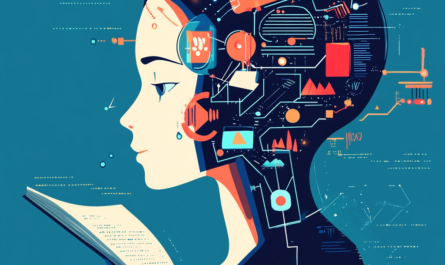Development of e-books and audiobooks
Since the beginning of the digital age, e-books and audiobooks have developed rapidly, providing new opportunities for reading and experiencing literature. In the early 2000s, the advent of devices such as Amazon’s Kindle and Apple’s iPad made e-books accessible to a wider audience. These devices provide the convenience of reading and storing a large number of books in one place, which is especially valuable for people who travel a lot or do not have the opportunity to store paper books.
Audiobooks, on the other hand, have become widespread thanks to the development of mobile apps and streaming platforms such as Audible and Storytel. These platforms allow listeners to enjoy books anytime and anywhere, which is especially convenient for those who prefer to listen to books while performing other tasks such as driving or playing sports. Both formats continue to evolve rapidly, offering new features such as interactive elements and improved audio quality.
Technological innovation and its impact on reading
Technological innovation plays a key role in the evolution of e-books and audiobooks. Modern book reading devices have high-quality electronic paper screens that minimize eye strain and provide comfortable reading in any lighting. Additionally, advances in software have enabled the integration of features such as automatic font size changes, night mode, and cross-device synchronization.
Technology has also made significant strides in audiobooks. Modern audiobooks can be recorded using high-quality sound and special effects, which enhances immersion in the narrative. In addition, there are options to adapt playback speed and add explanatory notes, allowing users to tailor their listening experience to their preferences and needs. All these technological innovations make reading and listening to books more accessible and comfortable.
Pros and cons of e-books
Electronic books have a number of significant advantages. One of the main ones is their portability: thousands of books can be stored on one device that is easy to carry with you. This is especially convenient for traveling or when storage space is limited. In addition, e-books are often cheaper than paper books and can also be offered with search, highlighting, and annotation features, making text easier to work with and analyze.
However, e-books also have disadvantages. First of all, some people prefer the tactile experience of reading a paper book, which cannot be replaced by a screen. It’s also worth noting that reading e-books requires a device and access to electricity, which can be a problem in certain environments. Some users also experience discomfort from prolonged screen reading, which can lead to eye fatigue.
Pros and cons of audiobooks
Audiobooks provide unique opportunities to absorb literature. One of the main advantages is the ability to listen to books at any time and anywhere, which is especially convenient for busy people. Listening to audiobooks does not require visual attention, which allows you to combine this process with other activities, such as driving or exercise. In addition, audiobooks can be narrated by professional actors, which adds an additional dimension to the perception of the text.
However, audiobooks also have their limitations. For example, they do not allow you to easily return to previous parts of the text or quickly skim the contents, as you can with a paper or e-book. In addition, the quality of text perception may depend on the voice acting and personal preferences of the listener. Also, while audiobooks can be a great way to master content, they are not always suitable for educational purposes where it is important to go into detail and structure information.
Comparison of consumer preferences and trends
Consumer preferences for e-books and audiobooks vary and depend on many factors, including age, lifestyle and personal preferences. The younger generation, accustomed to digital technologies, often prefers e-books for their convenience and accessibility. At the same time, audiobooks are becoming popular among people who value the ability to combine listening with other activities or do not have time for traditional reading.
Over time, there have been growth trends in the market for both e-books and audiobooks. Streaming platforms and subscription services are expanding access to a variety of libraries, which is attracting new users. As technology improves and the variety of content increases, both forms of digital books continue to gain popularity. In the future, we can expect their popularity to continue to grow, especially among generations who grew up in the digital age.
The future of e-books and audiobooks: forecasts and prospects
E-books and audiobooks, as important components of modern reading culture, will continue to evolve, integrating new technologies and adapting to changing user needs.
- Interactivity: E-books can include multimedia elements such as videos and animations to enhance interaction with the text and make learning more engaging.
- Personalization: The future lies in adaptive technologies that can adapt to the reader’s preferences, suggesting books based on previous choices and interests.
- Virtual and augmented reality: These technologies can enhance the immersive experience of a book, creating unique and immersive reading experiences.
- Global Availability: The development of Internet infrastructure will allow access to books even in remote regions, which will significantly expand the audience.
- Ethics and copyright: With the development of digital content, it will be important to address issues of protecting the rights of authors and preventing piracy.
As technology advances rapidly, e-books and audiobooks will continue to evolve, offering new forms of interaction with text and audio content, making reading accessible and fun for more and more people.
Questions and answers
Answer 1: Kindle from Amazon.
Answer 2: High quality e-paper screens and automatic font size changes.
Answer 3: The ability to listen to books anytime and anywhere.
Answer 4: The difficulty is in quickly returning to previous parts of the text and the dependence of the quality of perception on the voice acting.
Answer 5: The growing popularity of streaming platforms and subscription services for e-books and audiobooks.




